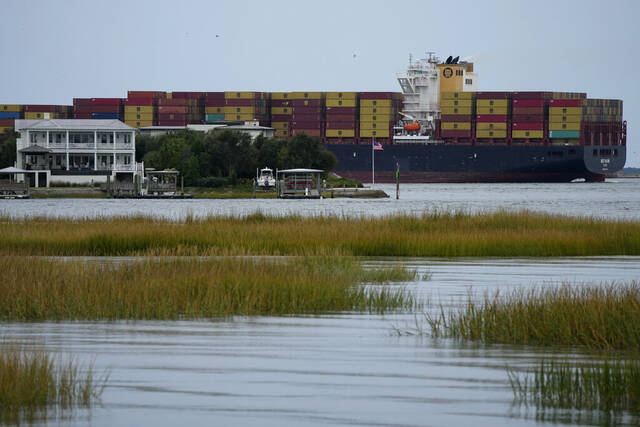Charleston, Savannah see abnormally high tides during storm
CHARLESTON, S.C. — A strong storm off the Southeast coast combined with periodic higher tides Sunday, causing coastal flooding that approached levels rarely seen outside of hurricanes along the South Carolina and Georgia coasts, officials said.
Scientists have said data shows the unusually high tides and the flooding of roads that come with it is happening more frequently as sea levels rise with global warming.
Sunday morning’s high tide reached 10.45 feet at Fort Pulaski, just east of Savannah, Georgia, the National Weather Service reported.
Coastal Flood alerts are in effect this morning. Tidal flooding is likely between 7AM-12PM. High tide is close to 10AM in the Charleston Harbor. Numerous street closures are likely in Downtown Charleston. pic.twitter.com/u1pdtmuwzN
— Chris Holtzman (@ChrisHoltzmanWx) November 7, 2021
It was the fourth-highest tide in the 85 years the gauge has been in place. The other three higher levels happened in tropical storms or hurricanes including the record of 12.56 feet in Hurricane Matthew in October 2016.
The water shut down several roads, including U.S. Highway 80 from Savannah to Tybee Island, officials said.
The Sunday high tide in Charleston Harbor reached 8.51 feet, which is the 10th highest level in the century of recording at that site, the weather service said.
As the weekend comes to a relatively quiet end for much of CONUS, a strong low-pressure system churns off the Southeast coast. While the storm will remain offshore, high winds, coastal flooding, and rough surf will impact much of the Southeast coastline over the next 24 hours. pic.twitter.com/4I8a5HezZ2
— NWS Weather Prediction Center (@NWSWPC) November 7, 2021
The high water closed dozens of roads in downtown and caused the city to cancel its Veterans Day parade scheduled for Saturday.
Sunday’s high tides were the culmination of four days of rising ocean water pushed ashore by both winds from a strong autumn storm offshore and periodic King Tides when the moon’s location causes the water level to increase.
Rising sea levels is leading to more frequent flooding, meteorologists said.
????????Check out these massive #waves at high tide over washing dunes and battering beach homes Buxton, North Carolina Sunday morning. #CoastalStorm #NCwx #stormdamage #damage pic.twitter.com/e1ZrMrLSdL
— WeatherNation (@WeatherNation) November 7, 2021
Thirteen of the 20 times Fort Pulaski has recorded a tide of 10 feet have happened since 2015, including twice during this month’s event, the weather service said.
Charleston Harbor has recorded 25 of the 39 tides of 8 feet or greater since 2015. The tide reached that level for major flooding three times already this month, meteorologists said.
Remove the ads from your TribLIVE reading experience but still support the journalists who create the content with TribLIVE Ad-Free.

